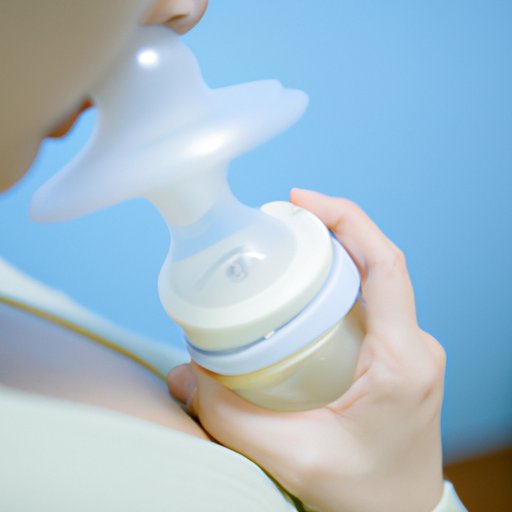Introduction
Pumping is an important part of breastfeeding, as it helps to maintain a mother’s milk supply and ensure that her baby is getting enough food. But what happens if you can’t pump regularly? In this article, we’ll explore strategies for maintaining breastmilk supply without regular pumping, as well as the potential benefits and risks of going longer between pumping sessions.
How to Manage Milk Supply When You Can’t Pump Regularly
When you can’t pump regularly, it’s important to pay attention to your body’s signals. If your breasts feel full or uncomfortable, that’s usually a sign that your body needs to pump more often. This is especially true if your baby is not nursing as often as usual. It’s also important to watch for signs of engorgement, such as pain, swelling, and hard spots.
There are several strategies you can use to maintain your milk supply without regular pumping. One of the most effective strategies is to nurse your baby frequently. The more often you feed your baby, the more stimulation your body will receive, which can help to keep up your milk supply. You can also try expressing milk manually (without a pump) or using a hand pump to relieve discomfort and encourage your body to produce more milk.
Strategies for Maintaining Breastmilk Supply Without Regular Pumping
If you can’t pump regularly, there are still ways you can keep up your milk supply. Here are some tips:
- Nurse your baby as often as possible. This will provide your body with the most stimulation and help to maintain your milk supply.
- Express milk manually or with a hand pump. This can help to relieve discomfort and encourage your body to produce more milk.
- Stay hydrated and eat a healthy diet. Drinking plenty of fluids and eating nutritious foods can help to keep your body in balance and support milk production.
- Rest as much as possible. Taking time to rest and relax can help to reduce stress and boost your energy levels.
It’s also important to make sure your baby is getting enough breastmilk even if you aren’t able to pump regularly. If you’re worried that your baby isn’t getting enough breastmilk, talk to your doctor or a lactation consultant for advice on how to ensure your baby is receiving adequate nutrition.
What Are the Benefits and Risks of Going Longer Between Pumping Sessions?
Extending the time between pumping sessions can have both advantages and disadvantages. On the plus side, it can give you more time to focus on other tasks and allow your body to rest. It can also help to reduce the amount of time you need to spend pumping each day. On the other hand, going too long between pumping sessions can cause your breasts to become engorged, which can lead to discomfort and even infection.
It’s important to understand the potential risks associated with infrequent pumping. Extended periods of time between pumping sessions can lead to decreased milk production, which can affect the amount of milk your baby receives. It can also increase the risk of mastitis, a painful breast infection that can be difficult to treat.
How to Balance Pumping Frequency and Baby’s Feeding Needs
The key to balancing pumping frequency and your baby’s feeding needs is to listen to your body. Pay attention to the signs that your body needs to pump more often, such as fullness or discomfort. It’s also important to check for signs of engorgement, such as pain, swelling, and hard spots.
It’s also helpful to keep track of your baby’s feeding patterns. If you notice that your baby is having trouble latching or is having difficulty getting enough milk during a feeding session, it may be time to pump again. You can also ask your doctor or a lactation consultant for advice on how to ensure that your baby is getting enough breastmilk.
Conclusion
When you can’t pump regularly, it’s important to be aware of the strategies you can use to maintain your milk supply and ensure that your baby is getting enough breastmilk. Nursing your baby frequently, expressing milk manually or with a hand pump, staying hydrated and eating a healthy diet, and taking time to rest and relax can all help to keep up your milk supply. It’s also important to understand the potential risks associated with going too long between pumping sessions, such as decreased milk production and increased risk of infection. By paying attention to your body’s signals and monitoring your baby’s feeding patterns, you can find a balance between pumping frequency and your baby’s needs. We hope this article has given you the information you need to make informed decisions about your pumping schedule.
(Note: Is this article not meeting your expectations? Do you have knowledge or insights to share? Unlock new opportunities and expand your reach by joining our authors team. Click Registration to join us and share your expertise with our readers.)
